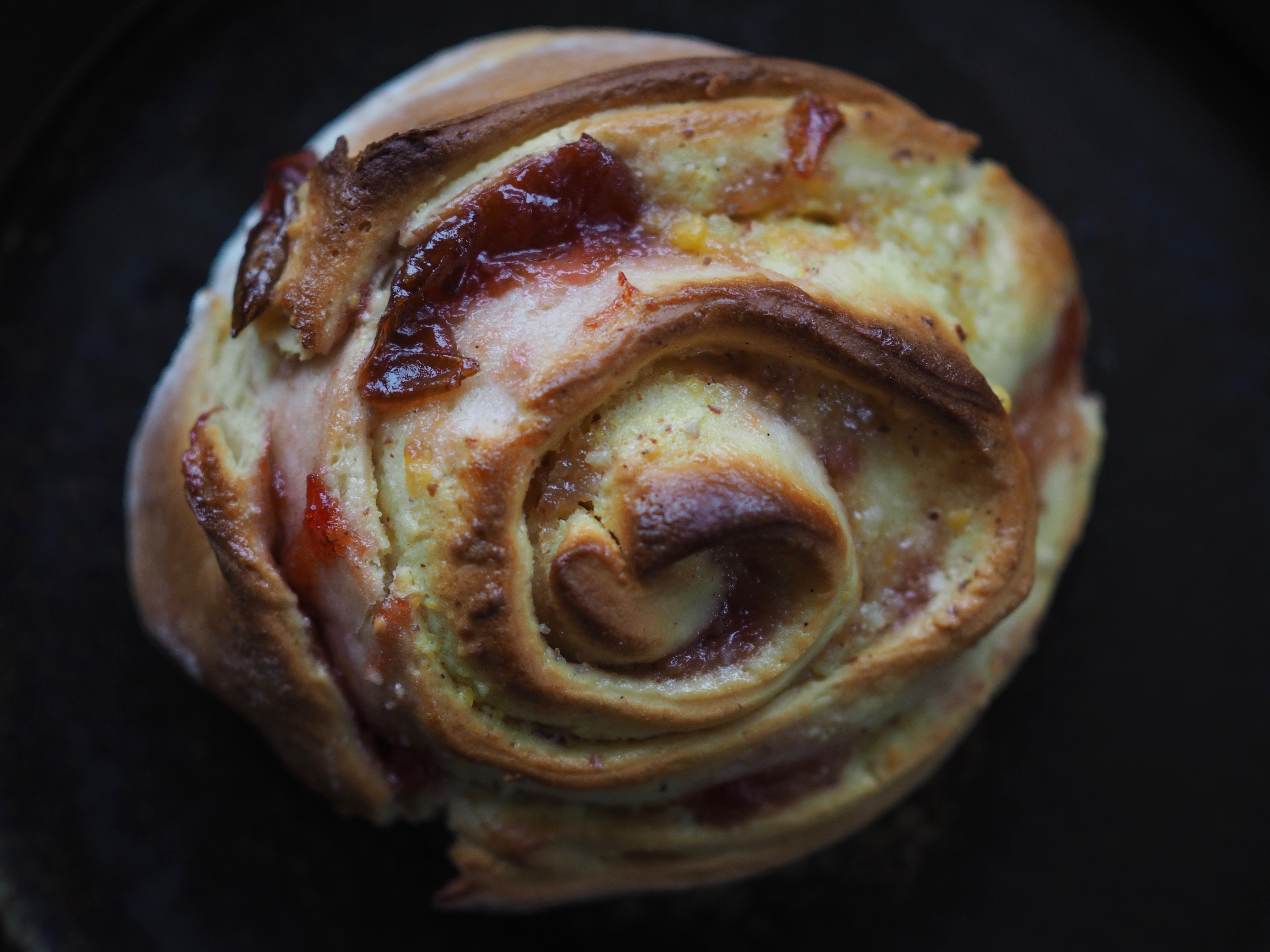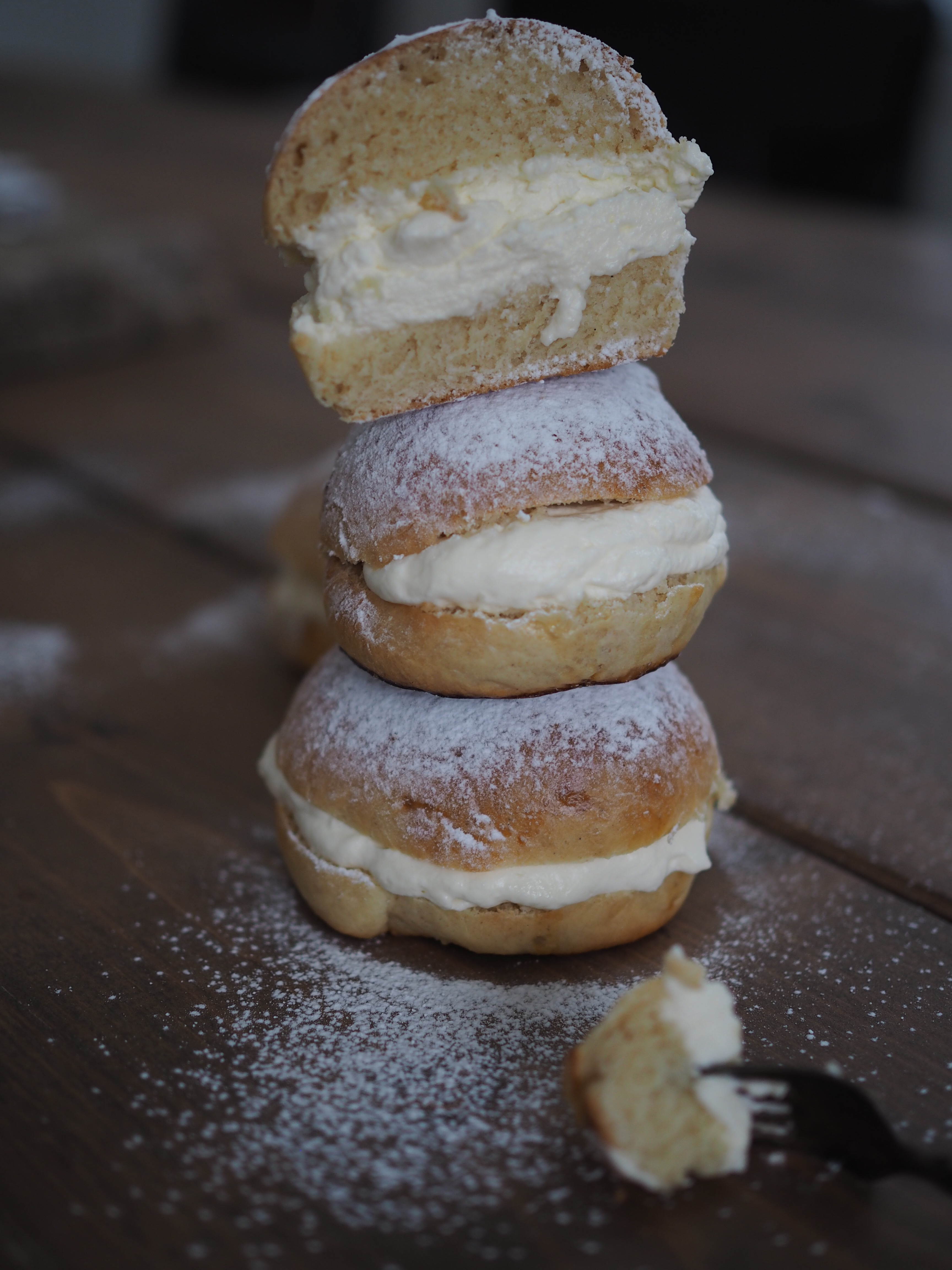
 Påske (Easter) is only a few weeks away and Norwegians are undoubtedly preparing for the days preluding påske and the days following. Påske is one of the biggest holidays in Norway – a full week off from work and school and whatever else occupies one’s time. Setting the religious aspects of the holiday aside, there are certain elements that need to be present in order for it to be a truly Norwegian påske. Two of these elements are oranges and chocolate. (more…)
Påske (Easter) is only a few weeks away and Norwegians are undoubtedly preparing for the days preluding påske and the days following. Påske is one of the biggest holidays in Norway – a full week off from work and school and whatever else occupies one’s time. Setting the religious aspects of the holiday aside, there are certain elements that need to be present in order for it to be a truly Norwegian påske. Two of these elements are oranges and chocolate. (more…)
Tag: buns
-

Whole Wheat, Dark Chocolate and Candied Orange Peel Braided-Swirl Bun (Grov-flettekrans med skjokolade og kandiserte appelsinskall)
-

Snurrer with Plums and Almond Custard
 Lightly sweetened buns, boller, are one of the most beloved breads in Norway. The sweet-smelling aroma coming from boller just baked in the oven is comfort at its best. The milk-based breads are soft and fluffy and lightly scented with spicy cardamom. They are simply divine in their subtleties. The most basic recipe features nothing other than this golden bun and its cardamom, which deserves its own post as it is the mecca for all other types of boller in Norway. This I will be sure to write about sometime in the near future.
Lightly sweetened buns, boller, are one of the most beloved breads in Norway. The sweet-smelling aroma coming from boller just baked in the oven is comfort at its best. The milk-based breads are soft and fluffy and lightly scented with spicy cardamom. They are simply divine in their subtleties. The most basic recipe features nothing other than this golden bun and its cardamom, which deserves its own post as it is the mecca for all other types of boller in Norway. This I will be sure to write about sometime in the near future.This recipe, however, is a little bit indulgent. Baking like this seems to occur more frequently when autumn is at its height and winter is peaking its head around the corner. Here I use the boller dough as a base while creating a variation on the filling and then rolling it like you would a cinnamon bun, which then gets the name snurrer in Norwegian.
I wanted to utilise the plums which I had picked from our tree and made jam out of a few weeks back. Homemade plum jam with boller. Perfection.
Plums have been cultivated since the 1700s in Norway, making the use of plums in Norwegian cooking a 300 year old tradition.
-

Fastelavnsboller
Fastelavn. Shrovetide. Carnaval.
Seven weeks before Easter, and sitting at the cusp of Lent, is a celebration spanning the centuries, and evolving to what is known today in Norway as Fastelavn, or ‘the fast evening’. Three days encompass the fastelavnsfeiring celebrations, starting on Fastelavnssøndag (Sunday), followed with Blåmandag(Blue Monday) or Fleskemandag and concluding with Feitetirsdag (Fat Tuesday) or Hvitetirsdag (White Tuesday).
The roots of Fastelavn tie into the fertility cult. When those with life – women, animals & trees – would be awakened to fertility by being struck with the branches of birch trees. This practice is known as Fastelavnris. Birch trees often had buds at this time of year, and those twigs were referred to as life twigs. It was believed that those branches which did not bear buds at this time, had the fertility effect in itself, and were regarded with even more favor. The blossoming buds were also used for crop and weather predictions. Later, with the associations of Christianity, the twigs were regarding as symbols of the Passion of Christ and as the beginning of Lent.
 The concept of awakening later turned into an old tradition of waking early from bed and grabbing birch branches to then playfully spank those who were not yet awake. It was normal, up until far into the late 1900s, for children to whip their parents for fun and to be treated to a cream-filled bun afterwards. These buns are still eaten on Sunday.
The concept of awakening later turned into an old tradition of waking early from bed and grabbing birch branches to then playfully spank those who were not yet awake. It was normal, up until far into the late 1900s, for children to whip their parents for fun and to be treated to a cream-filled bun afterwards. These buns are still eaten on Sunday.The star of Fastelavn: a bun. A boller, to be exact. Freshly baked. Sweetened cream nestled inside. Topped with a generous dousing of powered sugar – just enough to crown the lips of the one lucky enough to take a bite. These are decadent, yet simple. Sometimes, a spreading of jam will grace its interior as well, or custard, but traditionally, the cream should suffice. It’s possible these buns originated from the dumplings which previously were eaten with fatty soup and meat on Sunday as a practice of gluttony.


